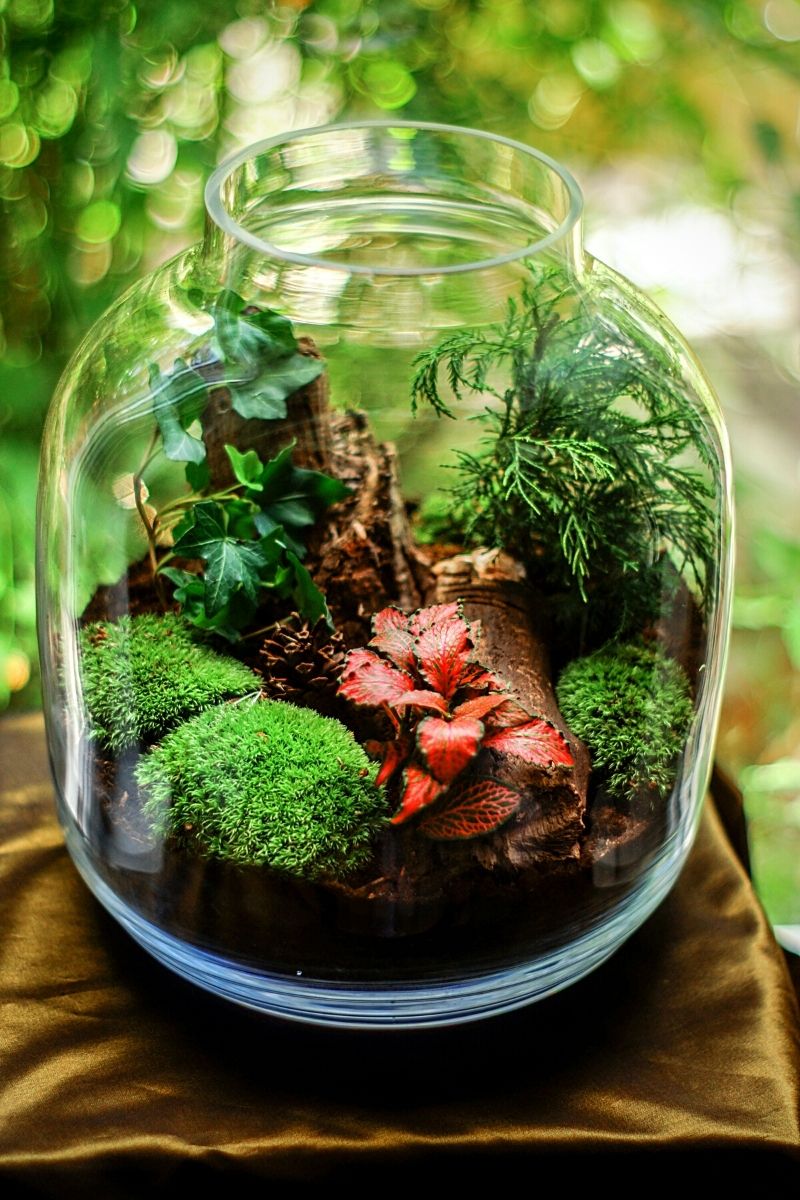The Enchanting World of Flowering Terrarium plants: A Comprehensive Guide
Terrariums, miniature ecosystems enclosed in glass, offer a captivating glimpse into the natural world. While foliage plants often steal the spotlight, flowering terrarium plants bring an extra layer of vibrancy and charm. Cultivating these delicate blooms requires a nuanced understanding of their specific needs, but the rewards are undeniably beautiful. This guide delves into the fascinating world of flowering terrarium plants, covering everything from selection and care to troubleshooting and design.
Before diving into specific plants, it’s crucial to grasp the unique environment a terrarium creates. Terrariums are typically categorized as either open or closed, each with distinct characteristics:
Closed Terrariums: A Self-Sustaining Ecosystem

Closed terrariums create a humid, self-regulating environment. The sealed glass container traps moisture, creating a miniature water cycle.
Open Terrariums: A More Breathable Space
Open terrariums allow for better air circulation, reducing the risk of mold and rot.
Choosing the right flowering plants is essential for a thriving terrarium. Consider the following factors:
Size and Growth Habit

Select plants that remain compact and grow slowly. Overly vigorous growers will quickly outgrow the limited space.
Light Requirements
Ensure the chosen plants can tolerate the light levels available in your terrarium. Most flowering terrarium plants prefer bright, indirect light.
Humidity and Moisture Needs
Select plants that thrive in the humidity levels of your chosen terrarium type (open or closed).

Here are some popular flowering plants that thrive in terrariums:
Miniature Orchids
Miniature orchids, such as Phalaenopsis and Masdevallia species, are prized for their exquisite blooms.
African Violets (Miniature Varieties)
Miniature African violets are known for their colorful, velvety flowers.
Miniature Begonias
Miniature begonias, such as Begonia masoniana (Iron Cross Begonia) and Begonia prismatocarpa, offer a wide range of flower colors and leaf textures.
Episcia
Episcia, also known as Flame Violets, are known for their beautiful leaves and bright flowers.
Miniature Gesneriads
Gesneriads such as Sinningia pusilla are excellent choices.
Cryptanthus
Although primarily grown for their colorful leaves, some Cryptanthus species produce small, delicate flowers.
Creating a successful terrarium involves careful planning and execution:
Choosing the Container
Select a clear glass container that allows ample light penetration.
Creating the Layers
Start with a layer of drainage material, such as gravel or expanded clay pellets.
Planting the Flowers
Carefully remove plants from their pots and gently loosen the roots.
Adding Decorative Elements
Enhance the terrarium’s aesthetic appeal with decorative elements, such as rocks, driftwood, and moss.
Proper care is essential for maintaining a thriving flowering terrarium:
Watering
Water sparingly, allowing the soil to slightly dry between waterings.
Lighting
Provide bright, indirect light for several hours each day.
Ventilation
Open closed terrariums periodically to allow for air circulation and prevent condensation buildup.
Fertilizing
Fertilize sparingly with a diluted liquid fertilizer formulated for flowering plants.
Pruning and Maintenance
Regularly prune plants to maintain their shape and prevent overcrowding.
Even with careful care, terrarium growers may encounter common problems:
Mold and Fungal Growth
Excessive moisture and poor ventilation can lead to mold and fungal growth.
Root Rot
Overwatering is the primary cause of root rot.
Pests
Common terrarium pests include aphids, mealybugs, and spider mites.
Lack of Flowering
Insufficient light or improper fertilization can prevent flowering.
Creating a visually appealing flowering terrarium involves careful consideration of design principles:
Theme and Composition
Choose a theme, such as a tropical rainforest or a miniature garden.
Color Harmony
Select flowering plants with complementary colors to create a harmonious palette.
Layering and Depth
Create depth by layering plants and decorative elements.
Personal Touches
Add personal touches, such as miniature figurines or unique decorative elements.
Flowering terrariums offer a captivating blend of beauty, tranquility, and horticultural challenge. By understanding the unique needs of these delicate plants and creating a suitable environment, you can cultivate a miniature world of vibrant blooms and lush foliage. The joy of watching your flowering terrarium thrive is a testament to the enduring appeal of these enchanting miniature ecosystems.



